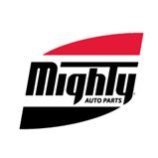-
Welcome to Auto Parts Forum
Whether you are a veteran automotive parts guru or just someone looking for some quick auto parts advice, register today and start a new topic in our forum. Registration is free and you can even sign up with social network platforms such as Facebook, X, and LinkedIn.
All Aboard the CAN Bus
-
Similar Topics
-
By Mighty Auto Parts
The post
link hidden, please login to view appeared first on link hidden, please login to view. When diagnosing engine performance complaints such as misfire symptoms, be advised that several systems and components can contribute to those symptoms. When considering single or multiple misfire codes, some checks may seem farfetched but trust me if not all are considered the symptoms can elude the most experienced technician, resulting in a misdiagnosis. When this […]
The post
link hidden, please login to view appeared first on link hidden, please login to view.
link hidden, please login to view -
By carbdoc
I cannot find a remanufactured brake booster for my 1978 Dodge D-150 truck with 400 c.i.d. engine to save my life! Yes, I can send mine out for rebuilding and hope that it comes back correctly repaired (or comes back at all), but I don't want to take my truck completely out of service while I wait for it to (hopefully) be correctly rebuilt. I would, however, gladly settle for a "loose" rebuildable core.
If anyone reading this has a rebuildable core that they will sell to me, I would be quite grateful.
Jeff
-
By NAPA
Chase Elliott and the No. 9
link hidden, please login to view team started 15th in Sunday’s NASCAR All-Star Race at North Wilkesboro Speedway after Saturday’s heat races were rained out and the lineup was set by qualifying results. When the first caution flag of the race came out on lap two, Elliott was scored in the same position in which he started. Under the yellow, crew chief Alan Gustafson called the 2020 NASCAR Cup Series champion to pit road for the primary tire option after starting the race on the soft tire option. Elliott restarted 16th on lap 11 and found himself inside the top 10 for the first time of the race on lap 41. The Dawsonville, Georgia, native battled with the ninth-place driver for several laps, but he couldn’t make the pass before the scheduled lap-100 caution occurred. The field came to pit road for mandatory pit stops, with the No. 9 team opting for the soft tires it had on earlier in the race. A fast, four-tire stop by the NAPA Racing crew gained Elliott two spots on pit road, and he lined up eighth for the choose cone, taking the inside lane for the restart on lap 109. The Hendrick Motorsports driver continued to battle inside the top eight and was scored in the seventh position when an on-track incident brought out the yellow flag on lap 118. Staying out on the track under the caution, Elliott lined up on the inside lane for the lap-124 restart and was running in the ninth spot when the second scheduled caution slowed the race on lap 150. Elliott relayed that his NAPA Auto Parts Chevrolet Camaro ZL1 needed more security, so the team made a chassis adjustment during its pit stop for four soft tires and fuel.
With some teams opting to pit for only two tires, Elliott lined up 12th for the choose cone and took the inside lane for the restart on lap 159. From there, he pressed forward and moved back into the top 10 on lap 165. He managed to gain two more positions before the checkered flag waved, claiming an eighth-place result in the 200-lap all-star event. It was Elliott’s second consecutive top-10 finish in the exhibition event and seventh top-10 overall in nine All-Star Race starts, which includes his 2020 victory at Bristol Motor Speedway when he took home the $1-million prize.
Start / Finish: 15 / 8
Points Standing / Total: 4th / 437 pts. (-49)
Next Race: Sunday, May 26, Coca-Cola 600, Charlotte Motor Speedway
How to Watch or Listen: 6:00 p.m. ET on FOX, PRN and SiriusXM
NAPA:
link hidden, please login to view
Chase Elliott: link hidden, please login to view
Hendrick Motorsports: link hidden, please login to view
No. 9 Team: link hidden, please login to view The post
link hidden, please login to view appeared first on link hidden, please login to view.
link hidden, please login to view
-





Recommended Posts
Join the conversation
You can post now and register later. If you have an account, sign in now to post with your account.
Note: Your post will require moderator approval before it will be visible.